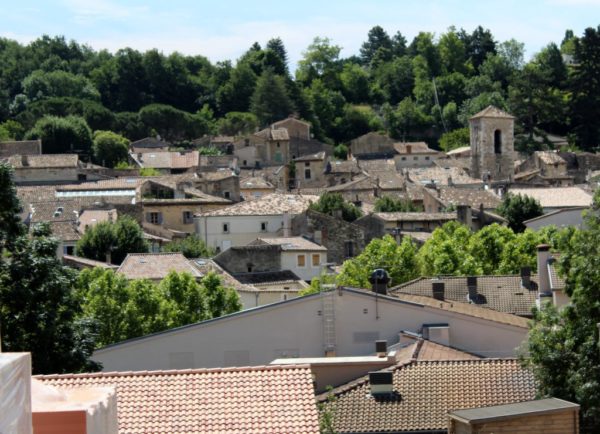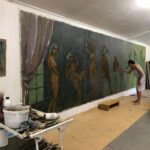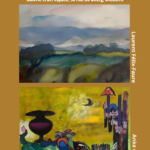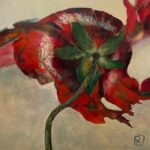Rainer Schlüter – The Love of Marble
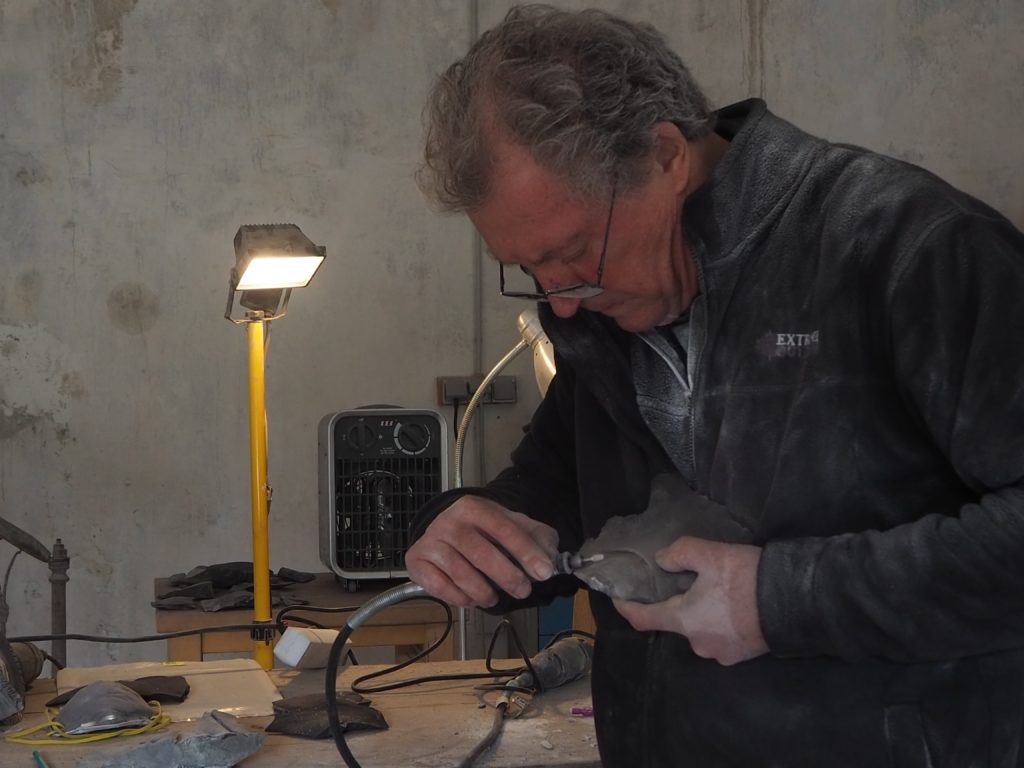
DIEULEFIT – A PLACE THAT MAKES A DIFFERENCE
There is something about Dieulefit that makes a difference. Something in the air! The village is set in a valley at an altitude of 400 metres. The older parts, la Viale, that date back to the 13th century have the charm of so many villages of the Drôme with the past still in them and the memory of events long gone that still linger. The medieval heart of the village is partly concealed by more recent buildings that have risen in the course of the centuries along the slope bordering the Jabron river that flows at the bottom of the valley. With a population of some 3500 souls the general aspect is that of a slightly ageing welcoming country town. And welcoming it is! Which is perhaps what makes the difference.
In 1915 at the time of the genocide by the Turks in their country many Armenians found refuge in Dieulefit and its environs. When the Spanish civil war broke out in 1935 once again the village opened its doors to fugitives and shortly afterwards to those who were fleeing the Nazis when the Germans invaded France in 1939. During those four years of occupation according to the historian Pierre-Vidal Naquet Dieulefit became “the intellectual capital of France.” He might well have added “for the arts in general.” The number of well known figures who resided here and found security and protection is unique. Writers and poets like Louis Aragon who was wanted by the Gestapo with a price on his head hid in a farm up in the nearby hills with his muse and great love Elsa Triolet:
“your eyes so deep I stoop to drink,
I’ve seen all the bright suns assemble here to preen* …”
It was in Dieulefit that Henri-Pierre Roché started to write his book Jules et Jim of which François Truffaut who founded the New Wave, made an acclaimed film starring Jeanne Moreau. The writer Pierre Jean Jouve, the poet Pierre Emmanuel and the philosopher Emmanuel Mounier, Pierre Seghers the editor, Yvonne Lefébure a piano prodigy, the group of mathematicians Bourbaki and more figures from the French intelligentsia lived in Dieulefit in those years. And, there were also a notable number of French and foreign painters like Willy Eisenschitz, Otto Wols, Claire Bertrand or again Etienne-Martin a friend of Henri-Pierre Roché. He was to become one of the foremost sculptors of the 20th century, a winner of the 33rd Venice Art Festival Award with his series “Dwellings.” Today his works are to be found in major museums worldwide. In the vicinity of Dieulefit as if it were a token of his stay, Etienne-Martin built an 8 metre high environmental monument called “La Vièrge au Sable” (the Sand Virgin) that nature has since reabsorbed.
Has such an exceptional concentration of writers, musicians, painters and sculptors during the war years left an indelible mark on Dieulefit? The question might well be posed, for artists continue to come, drawn by “something in the air.” This is the case of Rainer Schlüter a German sculptor whose artistic career includes exhibitions in Europe and in Australia where he worked and resided for several years, before settling in Dieulefit for good.
*Translation of “Les yeux d’Elsa” into English by Timothy Adès
RAINER SCHLÜTER (website)
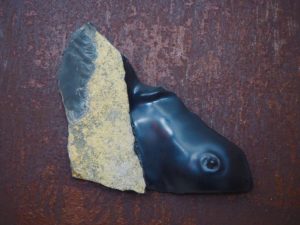 Rainer Schlüter is a German national who grew up, went to school, studied and worked in Belgium where his father was a European Union official. He also spent seven years in Australia, is widely travelled, speaks four languages and has lived and been active in multicultural environments. Today Rainer Schlüter has moved once again, this time to France to Dieulefit where he says he feels at home and where the spirit of all those intellectuals, craftsmen and artists who once found refuge in the village is kept alive. Interestingly, his aims in life are multiple. He obtained a Master’s Degree in Business Administration and Engineering while also studying art at the Belgium Academy of Fine Arts in Brussels. In both – to all intents and purposes – unconnected fields he has been a successful player, in the arts as a sculptor and as a business leader in the Co-operative Movement, furthering Alternative and Solidarity Economy at an international level. As early as 1982 just after having completed his art studies Rainer Schlüter was awarded the Third Prize of the Brussels Triennial of Sculpture. In that same year the International Organisation of Cooperatives in Industry and Services (CICOPA) was founded of which he became the General Secretary a position he held for 12 years before being elected its President while also continuing to serve on the board of the European branch of the organisation (watch a video).
Rainer Schlüter is a German national who grew up, went to school, studied and worked in Belgium where his father was a European Union official. He also spent seven years in Australia, is widely travelled, speaks four languages and has lived and been active in multicultural environments. Today Rainer Schlüter has moved once again, this time to France to Dieulefit where he says he feels at home and where the spirit of all those intellectuals, craftsmen and artists who once found refuge in the village is kept alive. Interestingly, his aims in life are multiple. He obtained a Master’s Degree in Business Administration and Engineering while also studying art at the Belgium Academy of Fine Arts in Brussels. In both – to all intents and purposes – unconnected fields he has been a successful player, in the arts as a sculptor and as a business leader in the Co-operative Movement, furthering Alternative and Solidarity Economy at an international level. As early as 1982 just after having completed his art studies Rainer Schlüter was awarded the Third Prize of the Brussels Triennial of Sculpture. In that same year the International Organisation of Cooperatives in Industry and Services (CICOPA) was founded of which he became the General Secretary a position he held for 12 years before being elected its President while also continuing to serve on the board of the European branch of the organisation (watch a video).
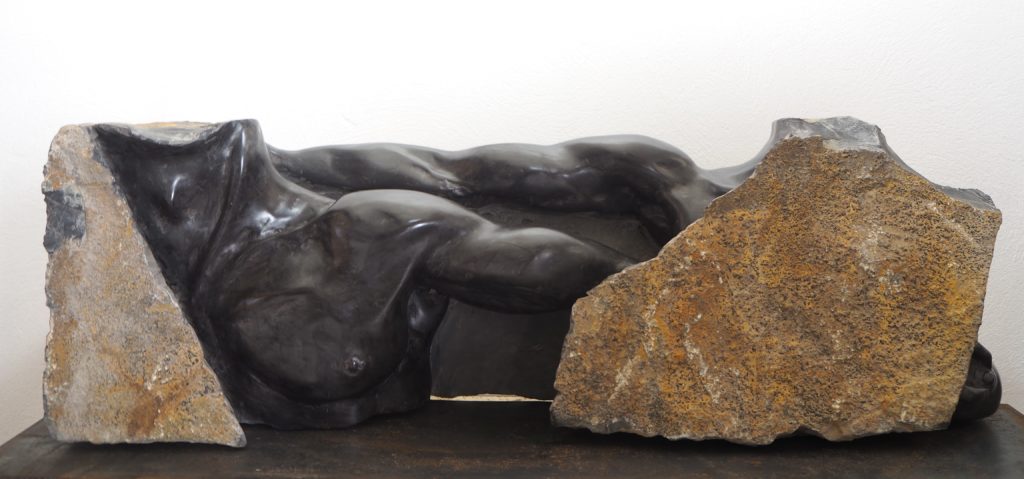
Such a deep commitment to several aims at a time requires an explanation. How does Rainer Schlüter manage to do it? The answer is perhaps quite simple: he is in heart and soul an artist and for him to be involved in the creative process whatever its nature is primordial. Rainer Schlüter gives form to his emotions as a sculptor and in order to achieve his humanitarian ideals he develops economic structures to help his fellow human beings. And, has he not also imagined and set up shared premises where individuals and professionals hailing from different horizons can work and communicate? All these activities are generated by an inborn urge to create! … Unless, unless the explanation is even more simple and to quote a famous unknown person “A man can do all things if he so desires!”
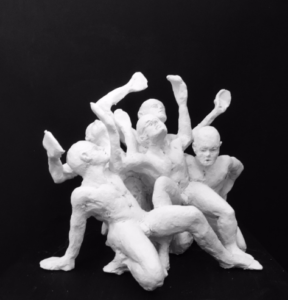 Rainer Schlüter at work (Video)
Rainer Schlüter at work (Video)
As a sculptor Rainer Schlüter is very much aware and insists that he is part of the long line of artists who have preceded him, going all the way back to the Greco-Roman statuary. Michelangelo, Rodin and other masters inspire him but in no way prevent him from being original and independent. He recalls an incident with Aboriginal artists when he lived in Australia. Their art fascinated him, the ochre colours made from clay and mixed with water, their designs and symbols. When he asked them to show him how they did it his request was met with a point blank refusal. “No, that belongs to us, it is our spirit, you may not steal it.” This seems to be how Rainer Schlülter regards his own cultural inheritance, that artists no matter the form and style they adopt are the carriers of the civilisation to which they belong. He very clearly wants to avoid the pitfalls expressed by the 19th century art critic John Ruskin that still stand today: “The worst characters of modern works of art result from their constant appeal to our desire of change, and pathetic excitement.”
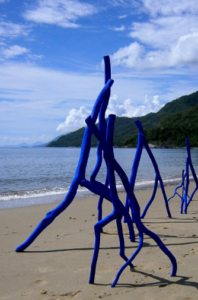 Besides being a sculptor Rainer Schlüter has tried his hand at various forms of visual art: drawing, graphics, modelling in clay, wax and plaster, carving wood, designing jewels in stone and metal and even setting up installations which is a very contemporary and even on the forefront form of art. On Australia’s Gold Coast having participated in an outdoor art festival with a group of sculptures called “Blue Dancers” made of mangroves he was awarded the Third Prize. They were painted in that very special and beautiful Yves Klein blue, and they symbolized the dance of nature and sea when exposed to stormy weather. However, not withstanding his experience with other means of expression, it is carving and polishing stone where his heart really lies!
Besides being a sculptor Rainer Schlüter has tried his hand at various forms of visual art: drawing, graphics, modelling in clay, wax and plaster, carving wood, designing jewels in stone and metal and even setting up installations which is a very contemporary and even on the forefront form of art. On Australia’s Gold Coast having participated in an outdoor art festival with a group of sculptures called “Blue Dancers” made of mangroves he was awarded the Third Prize. They were painted in that very special and beautiful Yves Klein blue, and they symbolized the dance of nature and sea when exposed to stormy weather. However, not withstanding his experience with other means of expression, it is carving and polishing stone where his heart really lies!
 Michelangelo allegedly stated that “Every block of stone has a statue inside it and the task of the sculptor is to discover it.” Rainer Schlüter favours marble but also igneous rocks like granite and basalt. The first phase in the creative process is selecting the right kind of stone for the sculpture he wants to make by visiting quarries that produce the high quality he requires: Carrare in Italy that is famous for its white marble, green marble in the Aosta Valley, black at Mazy in Belgium, blue and gold in Chillagoe in the far north of Queensland in Australia, the white chalk stone of the cliffs of Normandy and Crete. He spends hours nosing around in search of the stone with the right colour, grain, resistance to shattering, etc. and in the course of time he has gradually acquired a sixth sense by which he can tell just by looking at a block or a slab whether it is going to suit his purposes. The stones he picks out often also have a configuration or contain shapes and patterns that can be carved out and further developed into a final form.
Michelangelo allegedly stated that “Every block of stone has a statue inside it and the task of the sculptor is to discover it.” Rainer Schlüter favours marble but also igneous rocks like granite and basalt. The first phase in the creative process is selecting the right kind of stone for the sculpture he wants to make by visiting quarries that produce the high quality he requires: Carrare in Italy that is famous for its white marble, green marble in the Aosta Valley, black at Mazy in Belgium, blue and gold in Chillagoe in the far north of Queensland in Australia, the white chalk stone of the cliffs of Normandy and Crete. He spends hours nosing around in search of the stone with the right colour, grain, resistance to shattering, etc. and in the course of time he has gradually acquired a sixth sense by which he can tell just by looking at a block or a slab whether it is going to suit his purposes. The stones he picks out often also have a configuration or contain shapes and patterns that can be carved out and further developed into a final form.
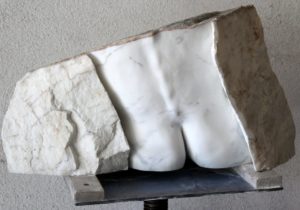 At first impression many of Rainer Schlüter’s sculptures bear a resemblance to beautiful fossils, highly polished forms between the rough crusted impurities of the stone. A closer look reveals that they are not the preserved remains of animals or plants that lived in a geological past. The stone has been hollowed out by the sculptor and the carved polished forms are frequently feminine body parts as though the timeless stone is about to give birth to a living being. This is perhaps in final analysis the purpose of art: give birth to what does not yet exist?
At first impression many of Rainer Schlüter’s sculptures bear a resemblance to beautiful fossils, highly polished forms between the rough crusted impurities of the stone. A closer look reveals that they are not the preserved remains of animals or plants that lived in a geological past. The stone has been hollowed out by the sculptor and the carved polished forms are frequently feminine body parts as though the timeless stone is about to give birth to a living being. This is perhaps in final analysis the purpose of art: give birth to what does not yet exist?
Posted in: Art
